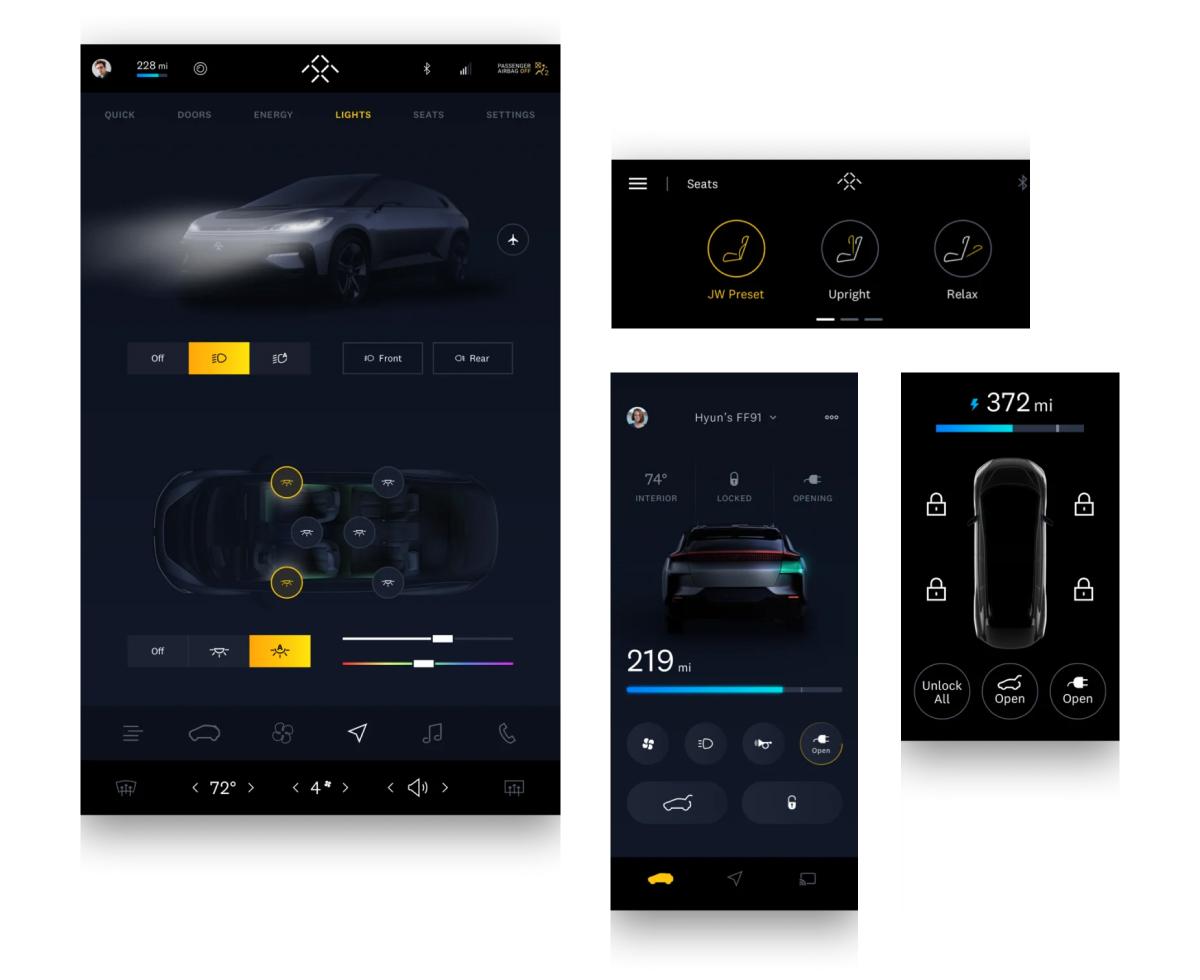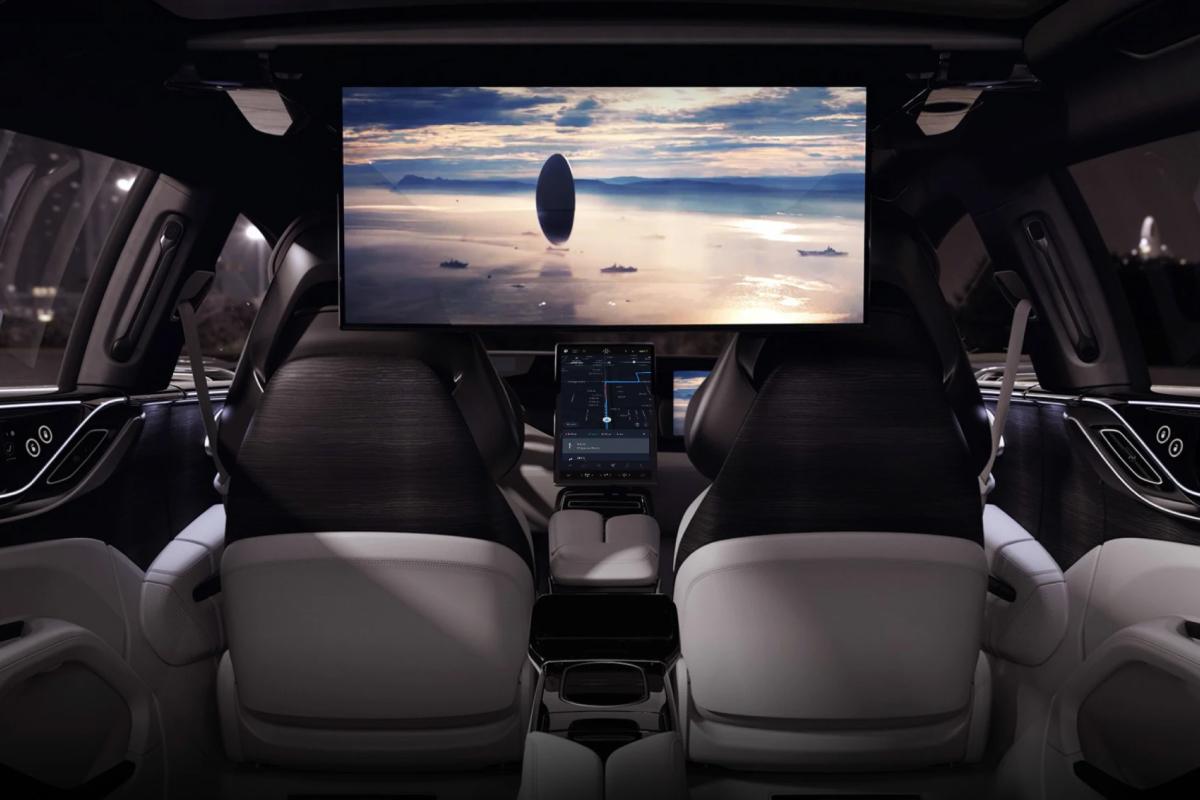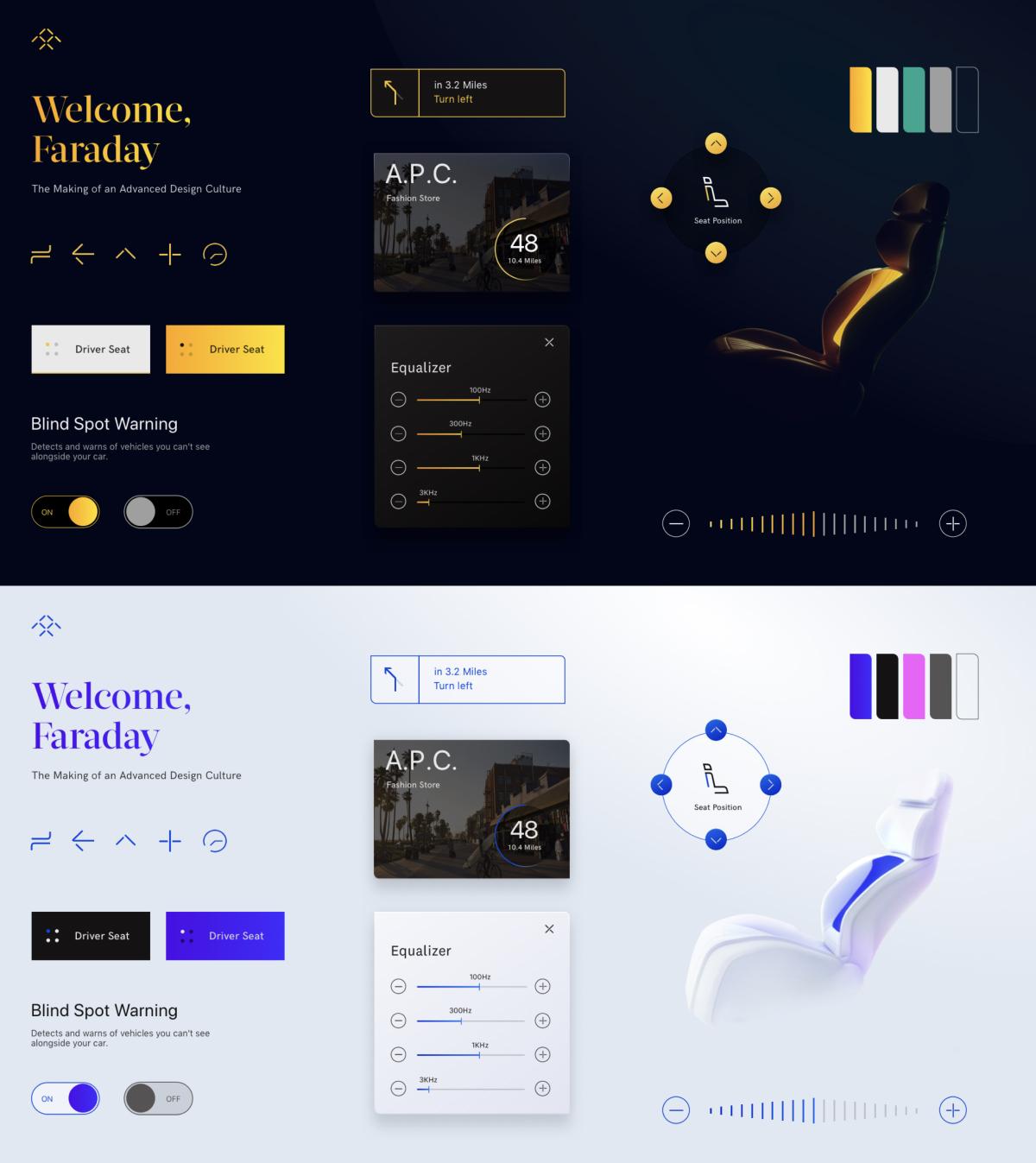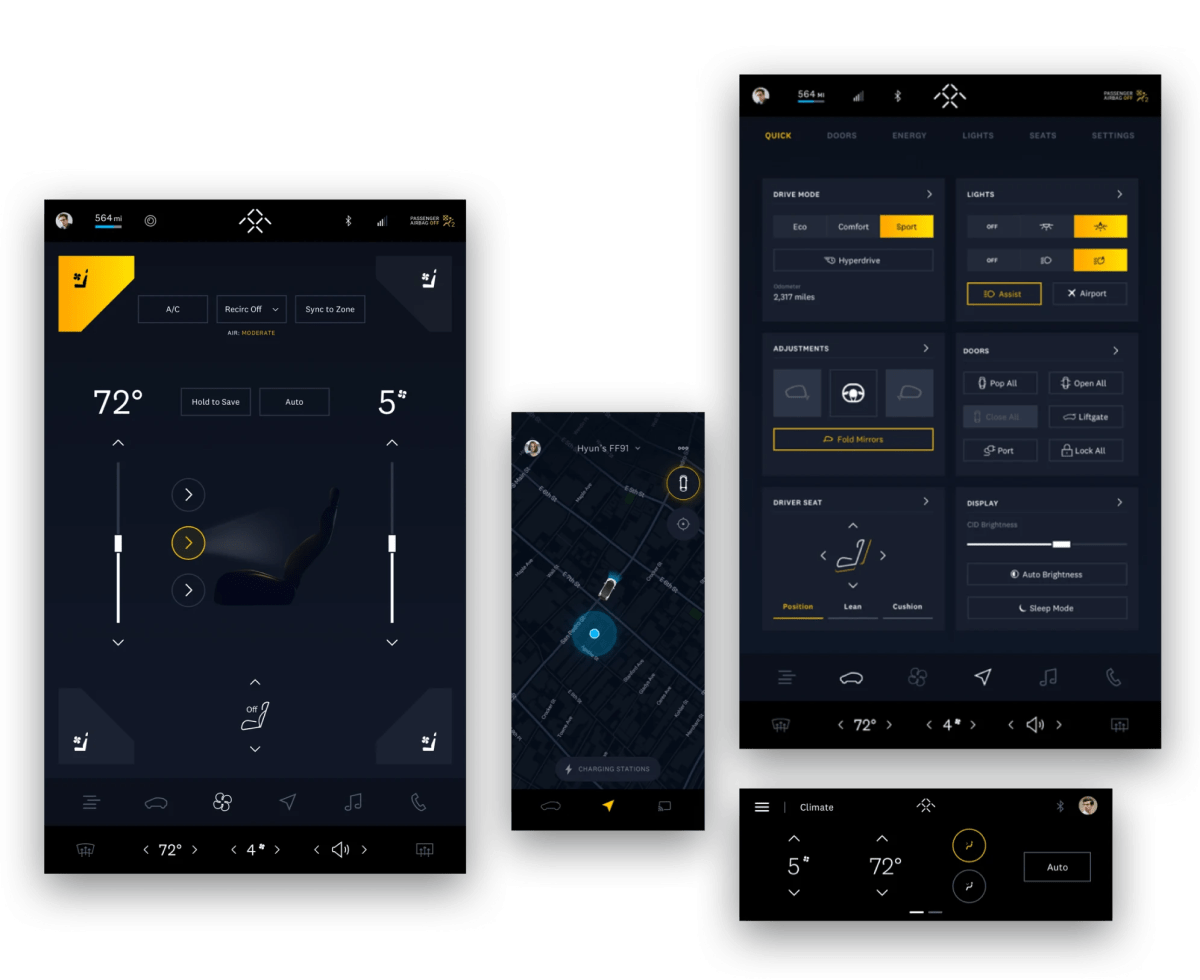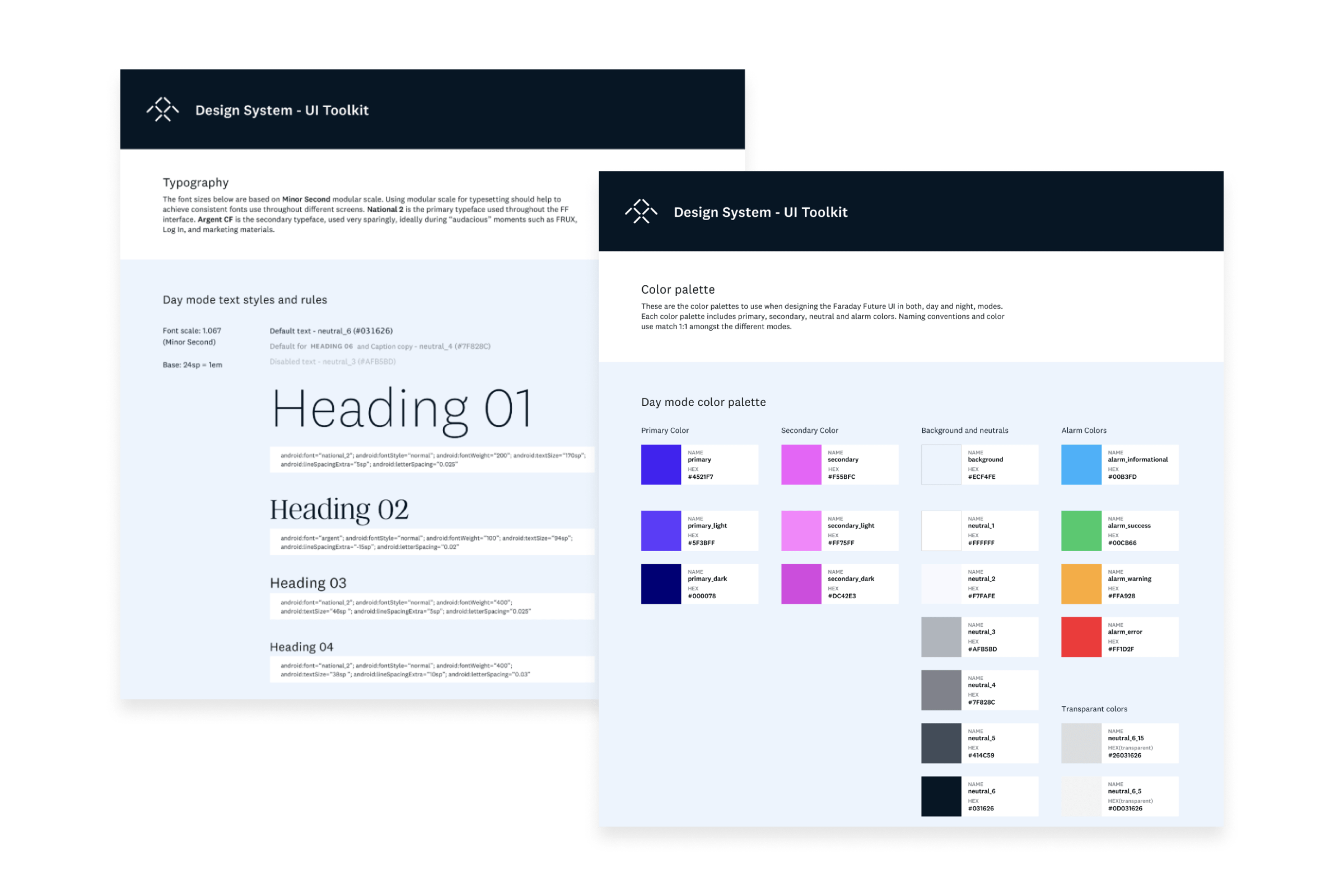
Designing UI for 10+ unique interactive screens within luxury electric vehicle
Overview
Over eight months, I headed a team of six product designers and worked alongside in-house UX designers and 3D artists to develop a functional and intelligent in-car user experience for the FF91, Faraday Future's first flagship consumer car.
This involved designing for 12 different screens, sounds, and voices in this luxury electric vehicle.
My role
Design Lead
Art Direction
Product Strategy
Agency
Edenspiekermann
Challenge
Our primary objective was to create a scalable design system that could facilitate the development of a uniform in-car user interface. Our work spanned various screens, including the center information display, door panels, and heads-up display. The task presented a rewarding challenge for our team, as designing for these distinct contexts greatly differed from creating interfaces for traditional digital screens.
To ensure we are creating a fitting user interface for the FF91, we conducted thorough market research and ran a number of workshops with key stakeholders. This allowed us to establish core design principles that guided our subsequent work, establish a visual language, and define the personality traits for the FF91's voice assistant.
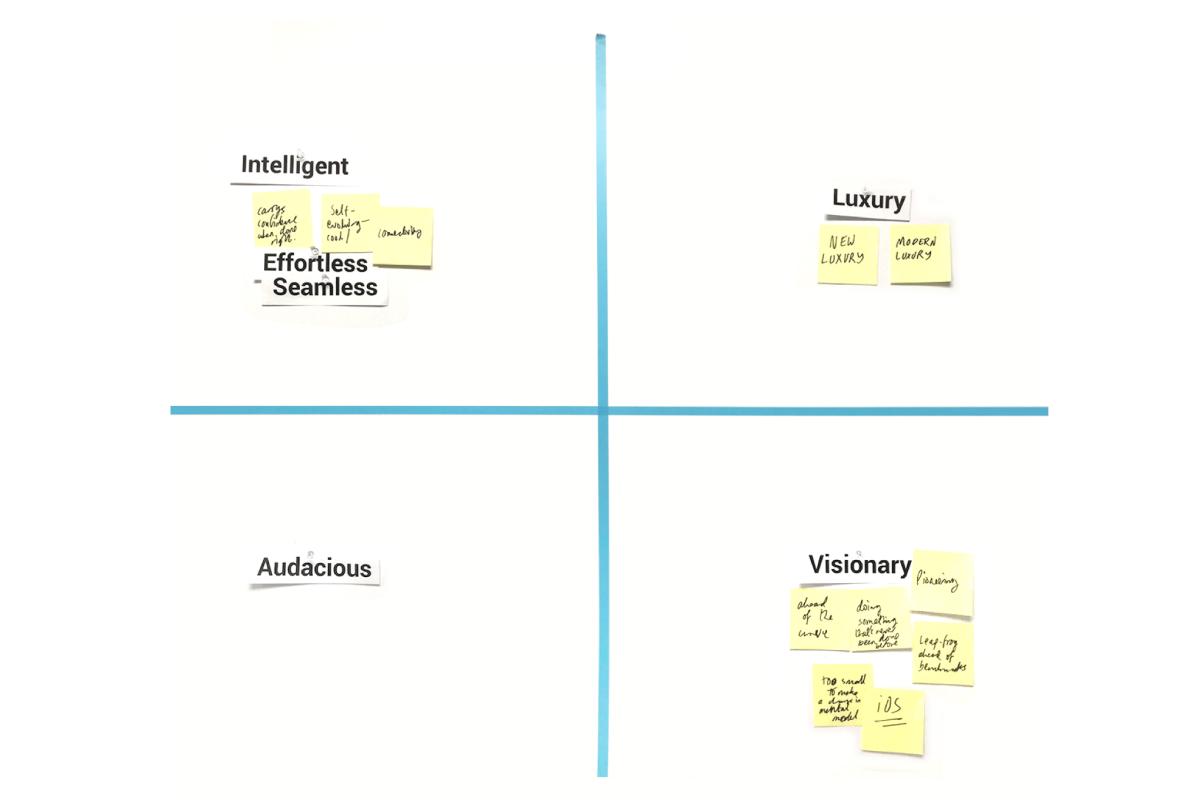
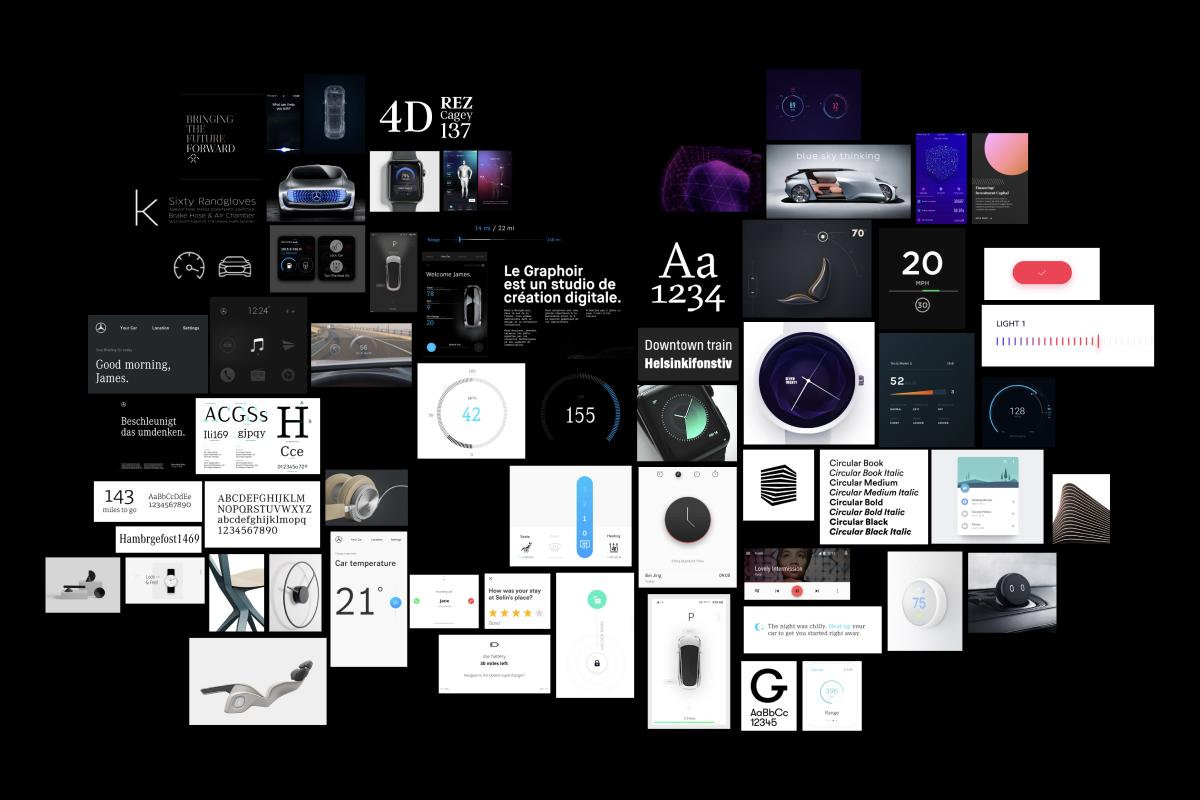
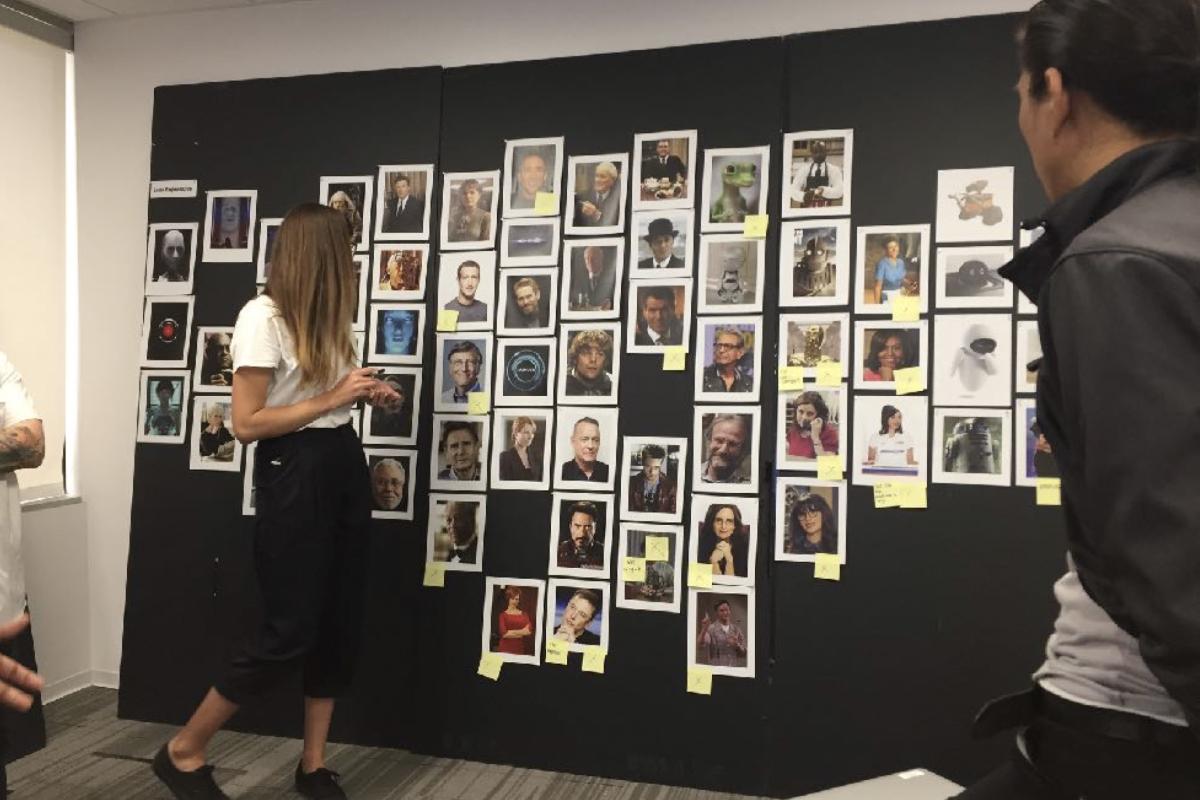
Balancing boldness and functionality
The color palette for the interface uses rich, vibrant hues. To achieve a visually striking effect, complementary tones were employed for both night and day modes. Moreover, the interface has a dynamic quality, with a shifting backlight that serves as a representation of the AI assistant. This feature adds an extra layer of immersion and interactivity to the overall user experience.
Designing for scale
As a design lead, I introduced and implemented effective tools and workflows that not only helped my team build a scalable design system, but also ensured its sustainability and scalability for Faraday Future.
To achieve this, we leveraged Sketch libraries to establish a comprehensive "single source of truth" for every symbol, and Abstract for collaborative screen layout versioning. Additionally, we utilized Zeplin for seamless handoff to engineers.
Despite being equipped with thorough UX documentation from the project's inception, we continuously refined and optimized user flows during the design process. Furthermore, we played a crucial role in developing essential in-car experiences, including voice control and navigation systems.
Specifics of my role
- Set up and helped roll out the new scalable design system for the FF91 UI
- Facilitated a number of workshops to align key stakeholders on the common design vision (from a look and feel for the 3D product renders to icons to UI screens)
- Developed many detailed creative briefs in order to effectively establish, drive and articulate design vision to my team and client
- Briefed on-site and remote designers on their daily tasks
- Provided feedback and guidance on my team’s work
- Communicated across Faraday’s internal teams, including design, ergonomics, writing and engineering
- Presented design work-in-progress to obtain feedback from key stakeholders
